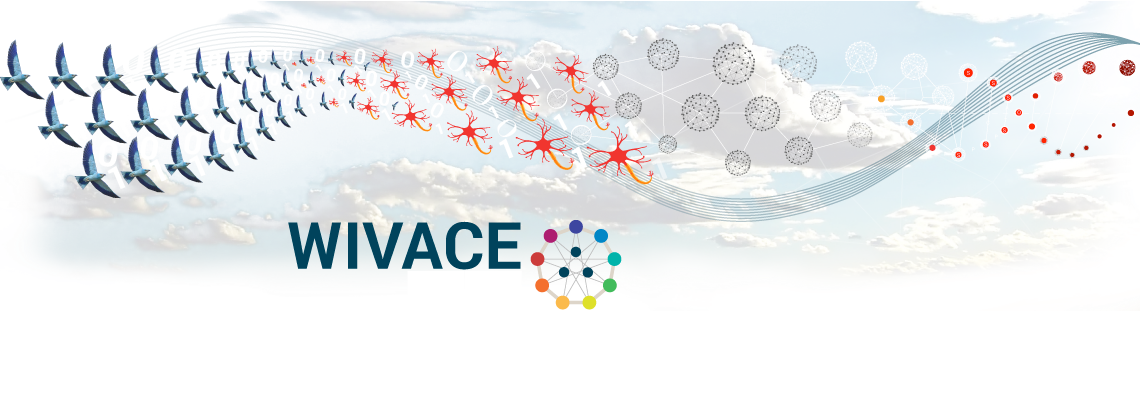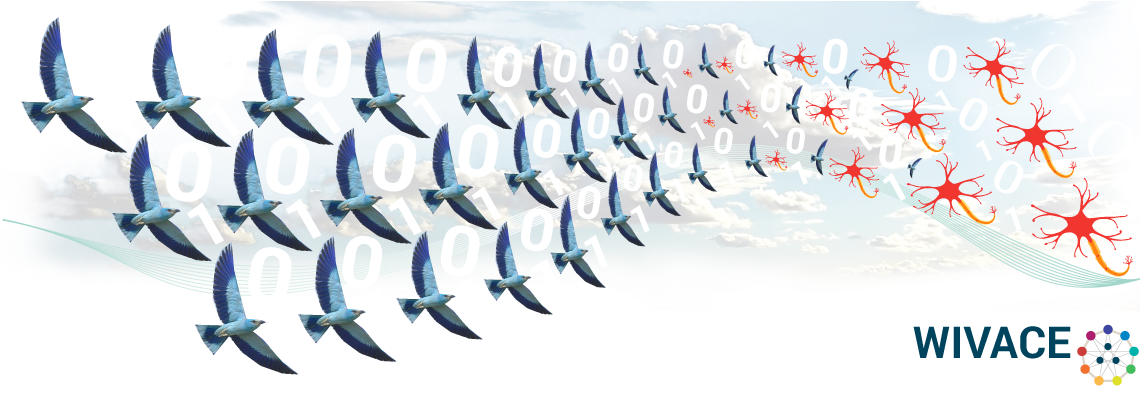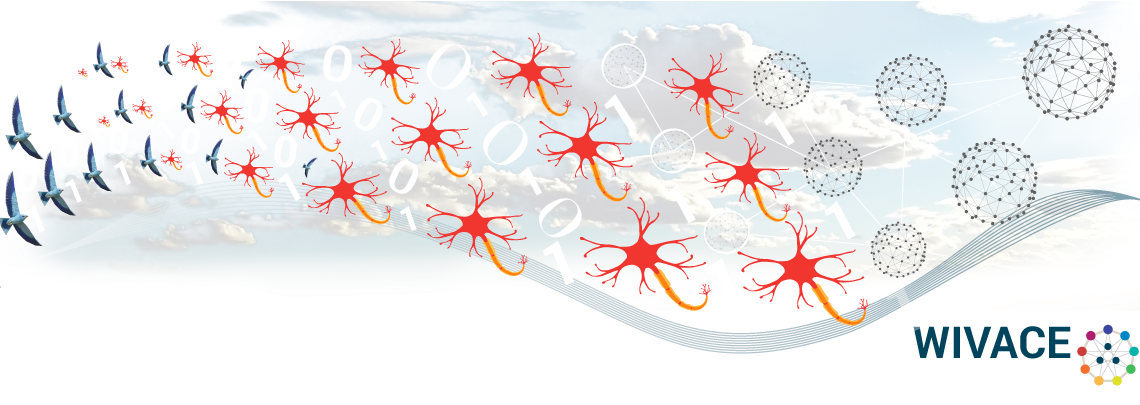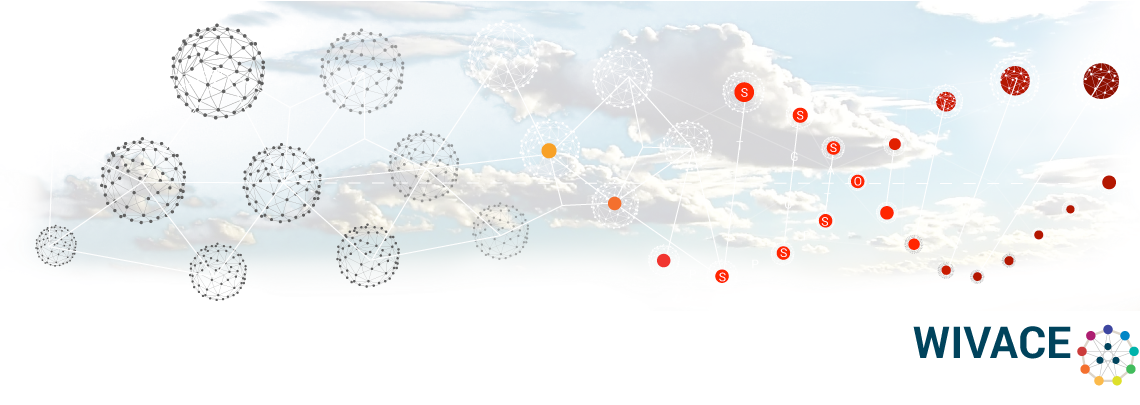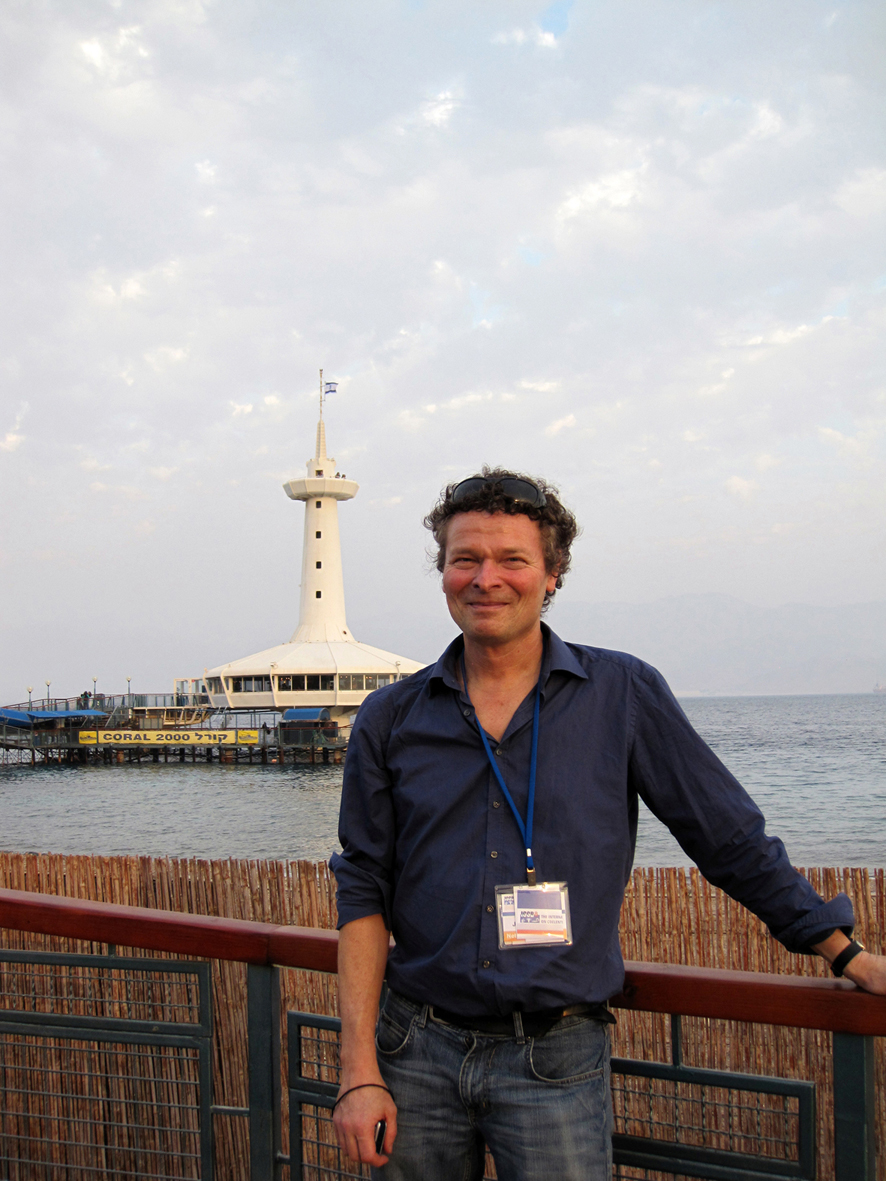
Title
Modelling growth and form of sea anemones and hydrozoans
Abstract
Rather than being directed by a central control mechanism, embryogenesis can be viewed as an emergent behavior resulting from a complex system in which several sub-processes on very different temporal and spatial scales (ranging from nanometer and nanoseconds to cm and days) are connected into a multi-scale system. In our research we have been focusing on the embryogenesis of basal organisms like the sea anemone Nematostella vectensis and the hydrozoan Clytia hemisphaerica. We have developed methods for analysing spatio-temporal gene expression patterns, methods for spatio-temporal modelling and inferring gene regulatory networks from gene expression data (qPCR data and in–situ hybridizations) and a cell-based mechanical model of early embryogenesis. Currently we are investigating how both levels of organization (gene regulation controlling embryogenesis and cell mechanics) can be coupled.
Biosketch
In 1985 Prof. Jaap Kaandorp received his MSc, with distinction, in biology (main subject marine biology) and a PhD (subject modelling growth and form of marine organisms) in computer science and mathematics in 1992, both from the University of Amsterdam. He worked from 1985 -1987 as a researcher at the Centre of Computer Science and Mathematics in Amsterdam. In 1992 he did research as a postdoctoral fellow, on a Government of Canada Award, at the Department of Computer Science of the University of Calgary in Canada. Currently Prof. Kaandorp is working as an associate professor at the Section Computational Science of the Faculty of Science of the University of Amsterdam. His research interests are: morphogenesis, marine sessile organisms, evolutionary processes, modelling and simulation of growth and form in biology
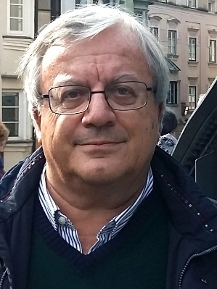
Title
Revisiting the “Edge of Chaos”
Abstract
The properties of dynamical systems that are poised between ordered and disordered states (i.e. “at the edge of chaos”) have been subject of extensive investigations since a long time. Heuristic, qualitative arguments have been provided in favour of the hypothesis that these systems are particularly well suited to deal with a changing environment. In biology, this leads to the claim that evolution might have favoured them, so that one expects to find “dynamical criticality” in present-day, highly evolved organisms. A similar qualitative reasoning might also be applied to artificial systems in a changing environment, e.g. robots or computer programs.
Providing quantitative tests of the claim that biological systems are dynamically critical has proven difficult. However, in recent years, data coming from neuroscience and from molecular biology have allowed some comparisons, with interesting results which will be reviewed and discussed. Examples of criticality in artificial systems will also be analyzed. Finally, the theoretical issue of a proper definition of dynamical criticality in strongly non ergodic systems, like those that are encountered in biology, will be addressed.
Biosketch
Roberto Serra graduated in Physics at the University of Bologna, where he was awarded the Guglielmo Marconi prize as the best graduate in 1977. He later performed research activities in the industrial groups Eni and Montedison, where he served as director of the Environmental Research Centre until 2003. In 2004 he moved to the Modena and Reggio Emilia University where he is full professor of Complex Systems at the Department of Physics, Informatics and Mathematics. His research interests concern several aspects of the dynamics of complex systems, paying particular attention to biological and social systems, and to the dynamical approach to Artificial Intelligence. He published more than 150 papers in international journals and refereed conference proceedings, and is co-author of four books. He has been responsible of several research projects, funded by companies, by the Italian Ministry for Scientific Research (Miur), by the National Research Council (CNR) and by the European Union. He has served as a member of the program committee of several international conferences, and has delivered various invited talks and seminars. He recently chaired two international conferences, one on Artificial Life and Evolutionary Computation (Venice, 2008) and one on Artificial Intelligence (Reggio Emilia, 2009). Roberto Serra has also been president of AI*IA (Associazione Italiana per l’ Intelligenza Artificiale) and is member of the Science Board of the European Centre for Living Technologies, where he served as president in the period 2006-2012.
Special Session on Quantum Computing
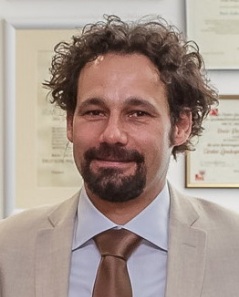
Title
Extreme simulations for quantum technologies
Abstract
In this seminar, we review some of the quantum science approaches to the solution of the many-body quantum problem. In particular, we introduce the tensor network methods, a class of classical algorithms developed to simulate many-body quantum systems, and review some of their applications, such as the benchmarking of quantum simulators, quantum annealing and the quantum version of Conway's game of life.
The simulation of many-body quantum systems is one of the most challenging problems in computational physics, since an N-body wave function describes a quantum system of N elements and the dynamical equations form a system of coupled partial differential equations with a number of variables that grows exponentially with N. Indeed, the original idea of quantum computers has been first put forward by R. Feynman to solve this class of problems.
Some of the most exciting instances of the equilibrium and out-of-equilibrium quantum many-body problem are condensed matter models, lattice gauge theories and quantum annealing, that can be applied to attack classical hard problems. Nowadays, the quantum many-body problem is attacked either via classical numerical methods such as tensor networks or via the first generation of quantum simulations.
Tensor network methods provide a compressed but faithful description of many-body quantum systems in a wide range of scenarios using a decomposition of the N-rank tensor into a network of low-rank tensors. Quantum simulators are dedicated quantum hardware tailored to reproduce the physics of another system in a controlled environment. They are the equivalent for many-body quantum systems of the wind tunnel for hydrodynamics. Eventually, it is expected that quantum simulators will overcome the predictive power of classical methods. However, to benchmark and build trust in the first generations of quantum simulators, detailed classical numerical simulations are required.
Biosketch
Simone Montangero is leading the line of research on quantum science at the Department of Physics and Astronomy of Padova University, where he is Full Professor since 2017. He has been a Heisenberg Fellow of the German Science Foundation, a Humboldt Fellow and he is an IQOQI visiting fellow of the Institute for Quantum Optics and Quantum Information of the Austrian Academy of Science. He has authored more than 100 scientific publications at the interface of quantum science, many-body physics, and condensed matter. S.M. has pioneered the development of tensor network methods for quantum technologies and the application of optimal control theory to many-body quantum systems, and he has been one of the main actors in the development and application of tensor networks for lattice gauge theories. He has been involved in several national and international projects. In particular, he is the coordinator of the EU-QUANTERA QTFLAG and principal investigator in the Quantum Flagship project PASQUANS. He has been principal investigator in the EU projects RYSQ, and DIADEMS and in the collaborative German project (DFG) SFB/TRR21, and workpackage leader in the EU project SIQS.
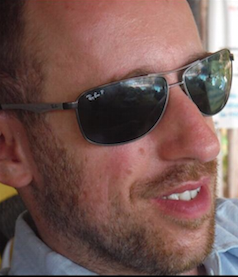
Title
The quest for quantum supremacy
Abstract
Integrated photonic circuits have a strong potential to perform quantum information processing. Indeed, the ability to manipulate quantum states of light by exploiting integrated devices may open new perspectives both for fundamental tests of quantum mechanics and for novel technological applications, ranging from quantum cryptography to quantum simulation. Within this framework, Boson sampling is a computational task hard for classical computers, but efficiently solvable via bosonic interference in a specialized quantum computer. This approach could represent an important leap toward a convincing experimental demonstration of the quantum computational supremacy. I will report on several experiments of boson sampling implemented with integrated quantum photonics. I will then discuss how to exploit machine learning methods to validate quantum devices such as Boson Samplers.
Biosketch
Associate professor in the Department of Physics. Graduated in Physics in 2000 at the University of Naples “Federico II”. He received his PhD in 2004 with a thesis in experimental quantum optics, with contributions on quantum teleportation and cloning. In the last few years he has provided several contributions to the field of integrated quantum photonics. He is the author of more than 150 publications in international journals (among which more than 20 publications on Nature and Science journals) and more than 100 invited presentations at national and international conferences.In 2010 he won the project HYTEQ (Hybrid Technologies for Quantum Information Processing) funded by FIRB – Future in Research for young Italian researchers. In 2012 he was awarded an ERC grant Starting Grant-Consolidator 3D-QUEST (www.3dquest.eu). He has coordinated at the European level the project Marie Curie Initial Training Networks (ITN): PICQUE (Photonic Integrated Compound Quantum Encoding: www.picque.eu), and the project H2020 FET Proactive: QUCHIP (Photonics Quantum Simulator on a Chip). He has the lecture in Quantum Information and Computation at the University “La Sapienza”. He has received several awards, including Premio Sapio Junior per la Ricerca Italiana, the Medal “Le Scienze in Fisica” with the “Medal of the Presidency of the Republic”, the Young Scientist at World Economic Forum - Summer Davos in 2015 and 2016. He is leading the Quantum Information Lab at the Department of Physics, Sapienza University of Rome.
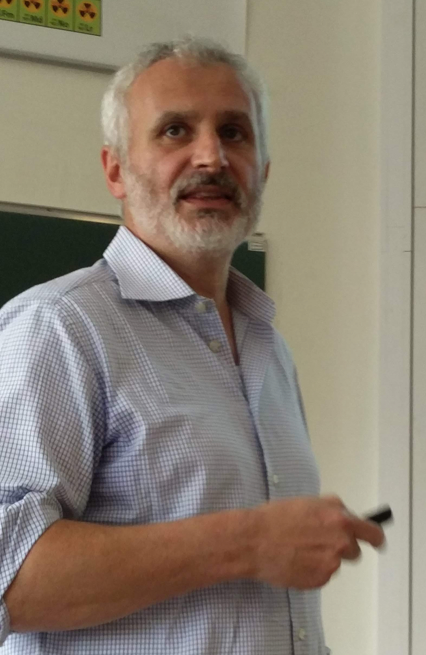
Title
Quantum computing for quantum chemistry applications
Abstract
The simulation of the electronic structure of molecular and condensed
matter systems is a challenging computational task as the cost of
resources increases exponentially with the number of electrons when
accurate solutions are required. With the deeper understanding of
complex quantum systems acquired over the last decades this
exponential barrier bottleneck may be overcome by the use of quantum
computing hardware. To achieve this goal, new quantum algorithms need
to be developed that are able to best exploit the potential of quantum
speed-up [1,2]. While this effort should target the design of quantum
algorithms for the future fault-tolerant quantum hardware, there is
pressing need to develop algorithms, which can be implemented in
present-day non-fault tolerant quantum hardware with limited coherence
times [3].
In this talk, we will first introduce the basics of quantum computing
using superconducting qubits, focusing on those aspects that are
crucial for the implementation of quantum chemistry algorithms. In the
second part, I will briefly discuss the limitations of currently
available classical approaches and highlight the advantages of the new
generation of quantum algorithms. In particular, I will present:
- ways to generate efficient trial wavefunctions and their mappings to quantum circuits
- the computation of ground state properties using the Variational Quantum Eigensolver algorithm
- procedures to reduce the overall circuit depths in quantum chemistry calculations and experiments, and
- extensions for the calculation of additional properties including electronic excited states.
References
[1] B.P. Lanyon et al, Nature Chem. 2, 106 (2010).
[2] N. Moll, et al, Quantum Sci. Technol. 3, 030503 (2018).
[3] P. Baroutsos, et al, ArXiv: 1805.04340 (2018).
Biosketch
I studied Biochemistry (M.Sc., 1991) and then Theoretical Physics (M.Sc., 1996) at the Eidgenossische Technische Hochschule Zürich (ETHZ), where I also obtained my Ph.D. in 1999. In 2000, I received a Marie Curie Fellowship to work in the group of Prof. Michiel Sprik at Cambridge University (UK). I then moved back to Switzerland to join the group of Prof. Ursula Roethlisberger, first at ETHZ (2002–2003) and later at the École Polytechnique Federale de Lausanne (EPFL, 2003-2014). In 2010, I earned the title of Maître d’Enseignement et de Recherche (MER) at EPFL. Finally in December 2014 I joined the IBM Research-Zurich laboratory in Rueschlikon, Swirzerland.
In the field of quantum-classical dynamics, I have developed and implemented in the CPMD software package a novel theoretical framework to combine electronic structure techniques based on density (DFT and TDDFT) with the calculation of nonadiabatic quantum and classical trajectories. My research interests in this field comprise adiabatic and nonadiabatic molecular dynamics (Ehrenfest dynamics, trajectory surface hopping, and Bohmian dynamics) for the study of photochemical and photo-physical processes in molecules, condensed phase, and biological systems.
More recently, I extended my research activities in the field of material design, focusing on the combination of ab-initio and machine learning techniques together with big-data analysis for the design of new materials with improved properties. This project is carried out within the swiss NCCR (National Centers of Competence in Research) project MARVEL.
In 2015, I also joined the quantum computing team at ZRL working on superconducting qubits architectures. My main focus is in the development of quantum algorithms for the simulation of fermionic systems (correlated electrons in molecules and solids) in both adiabatic and digital quantum computers.
At present, I am technical leader of the group on theoretical quantum computing at IBM Zurich.
